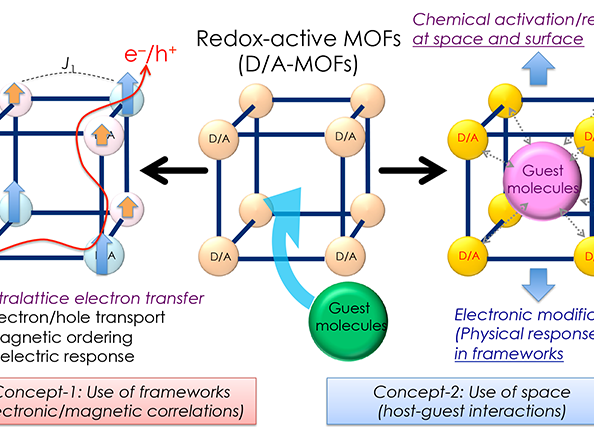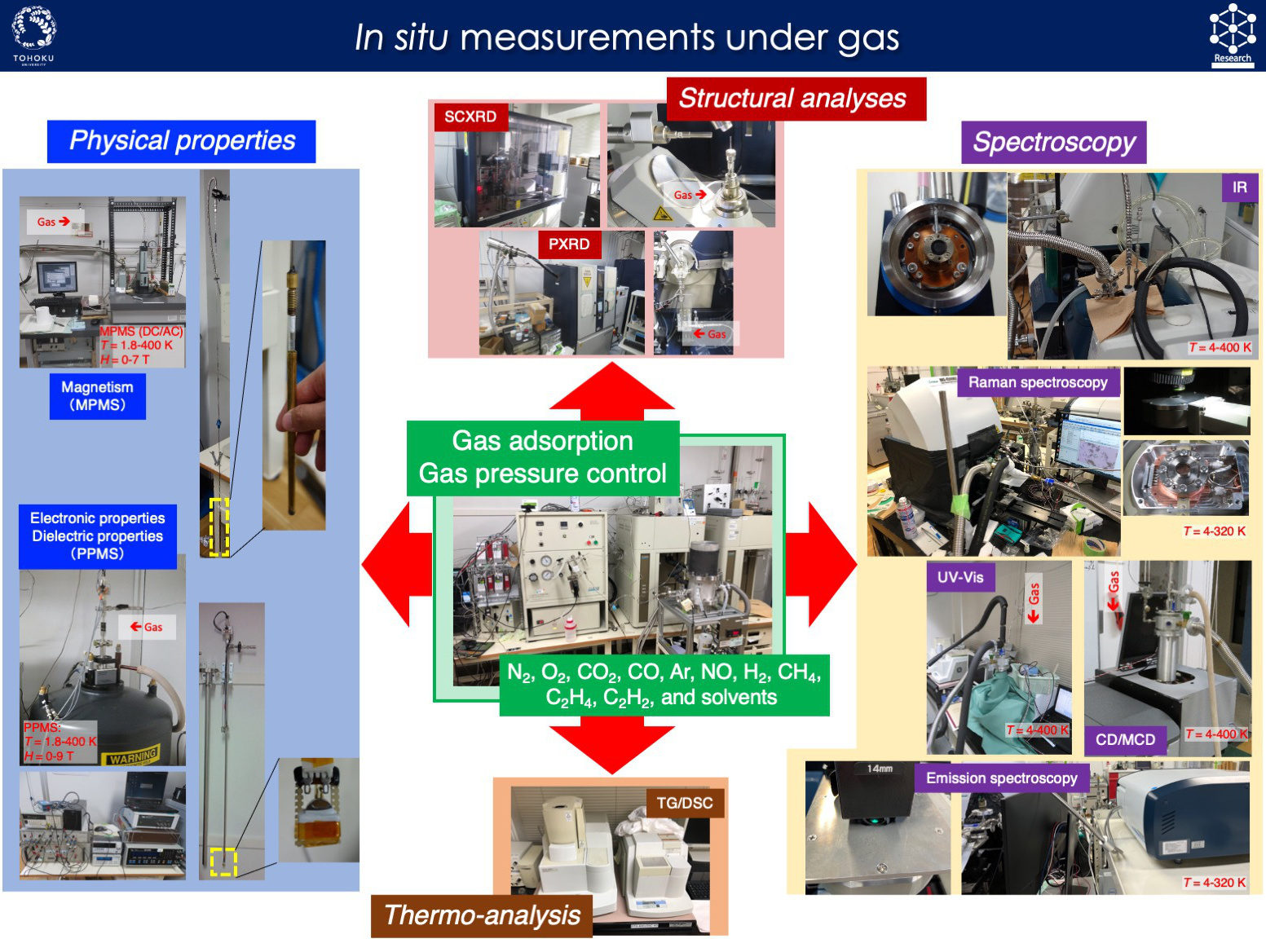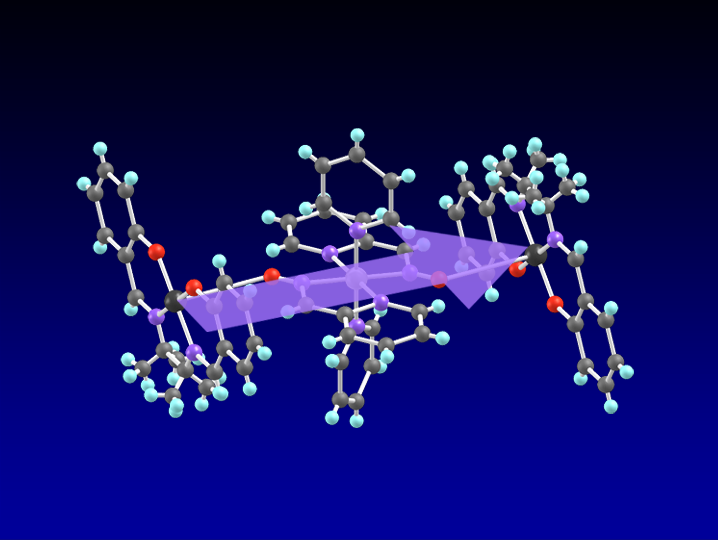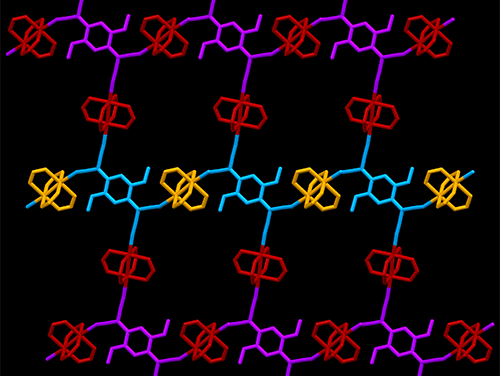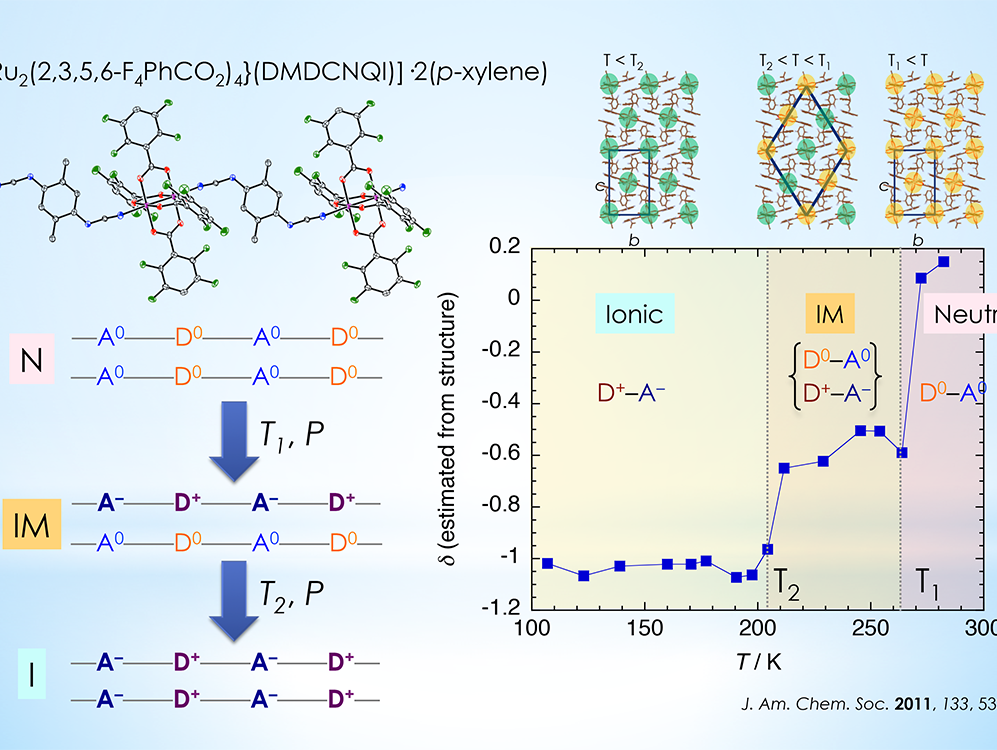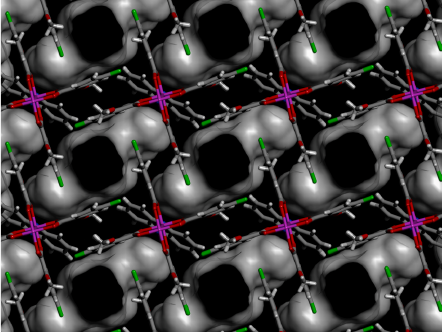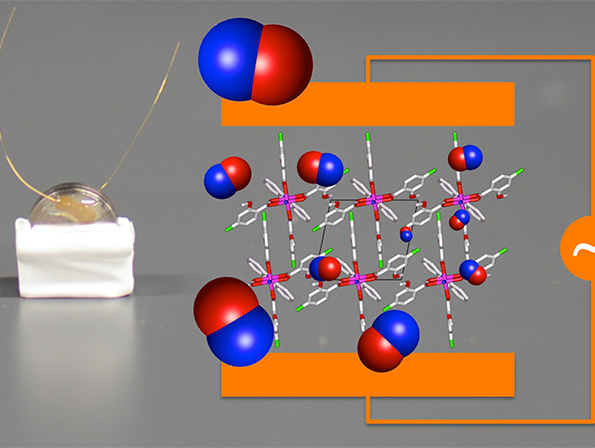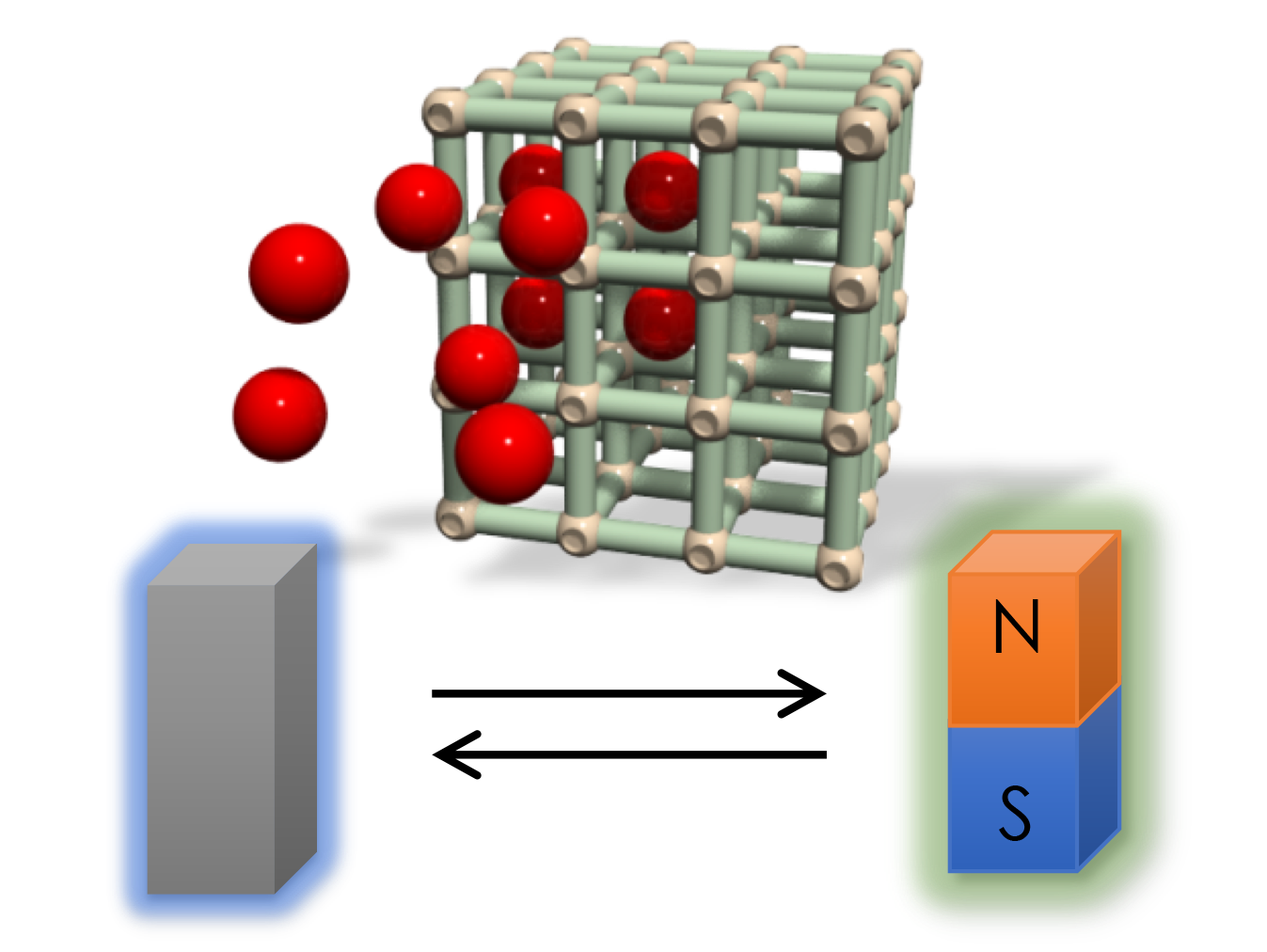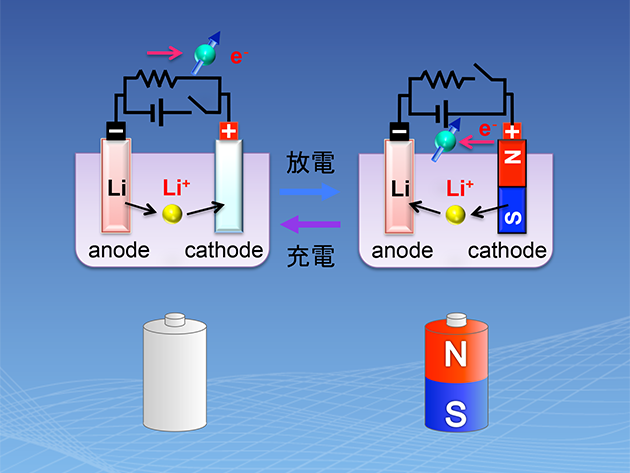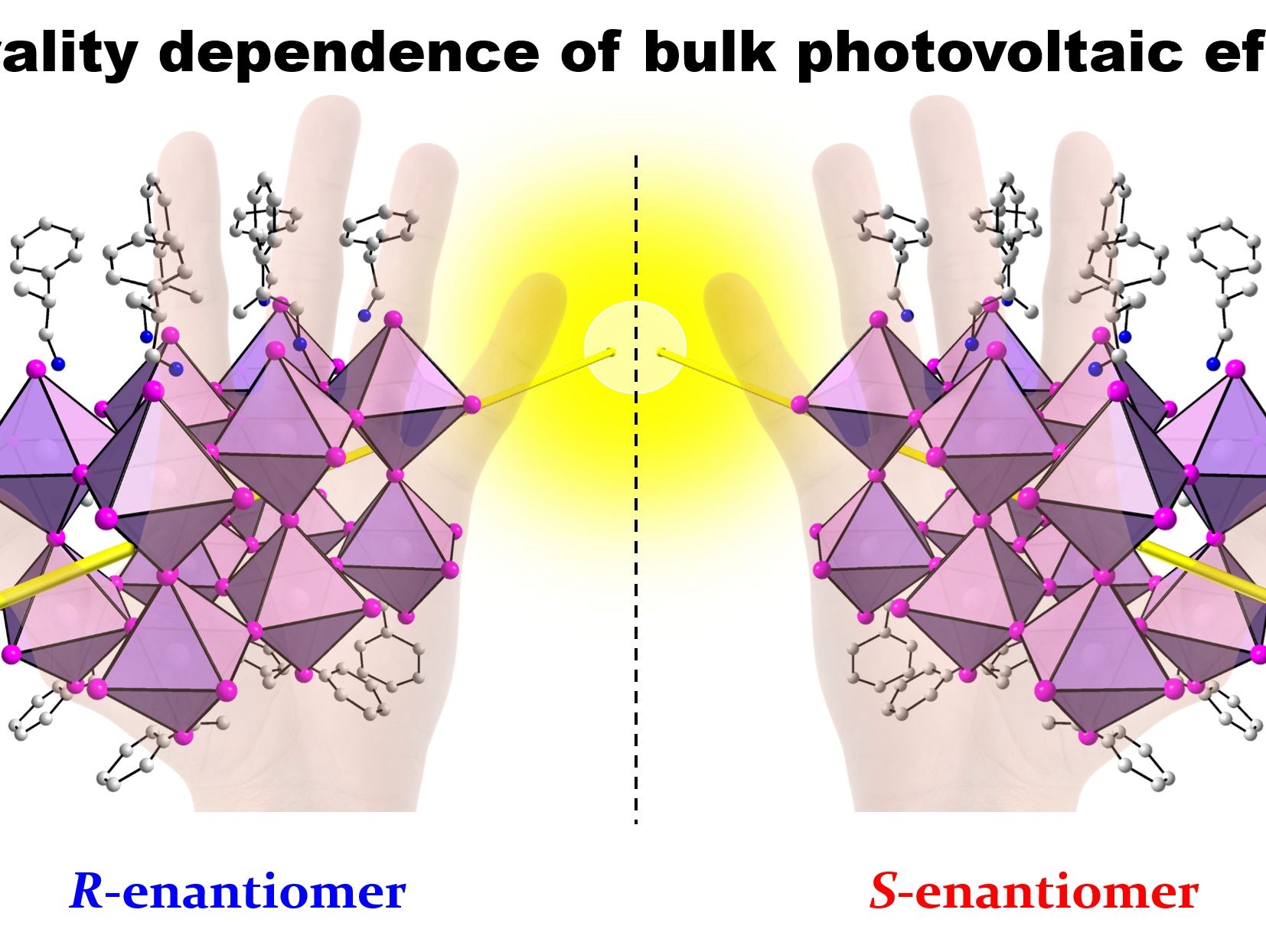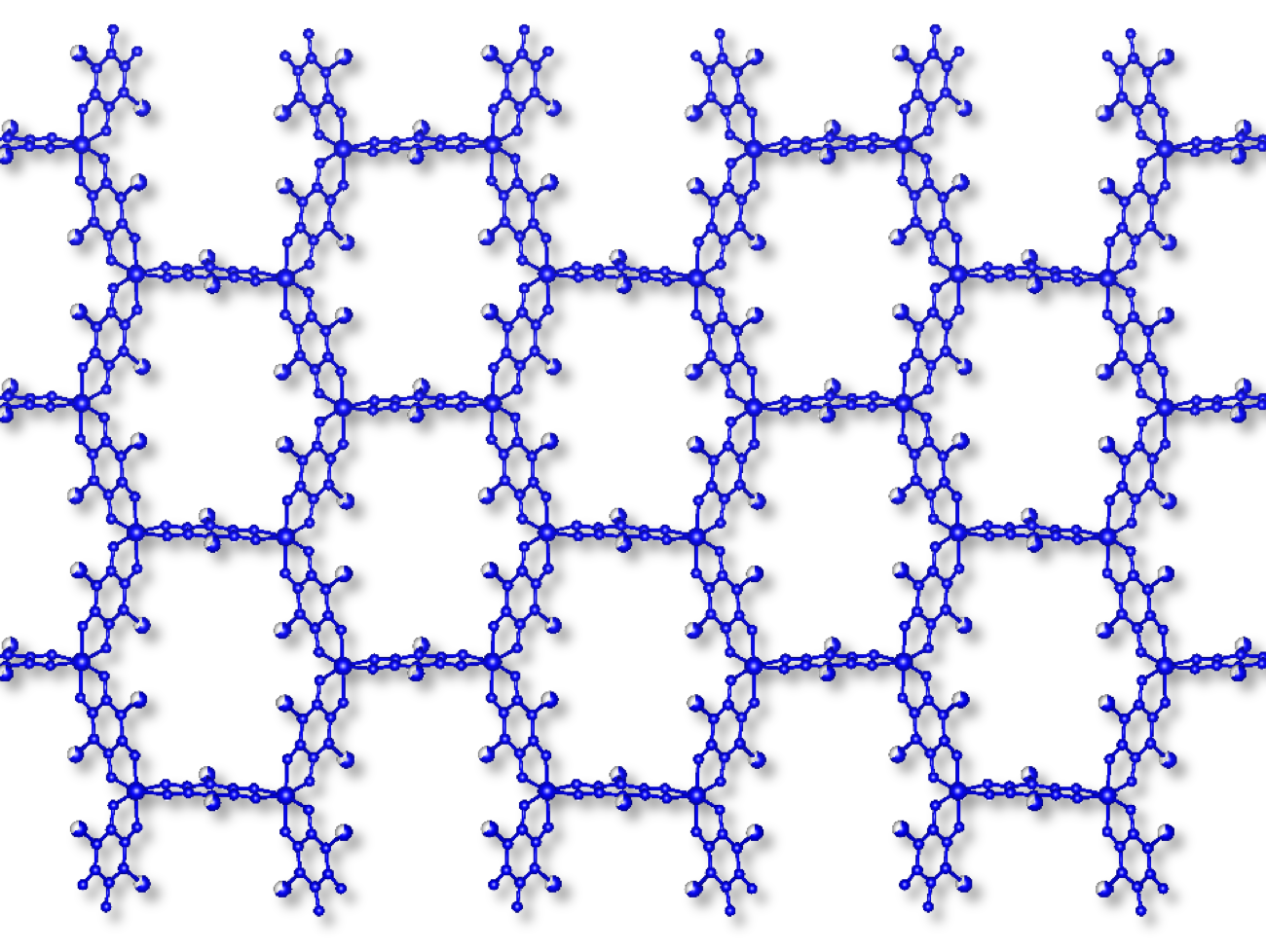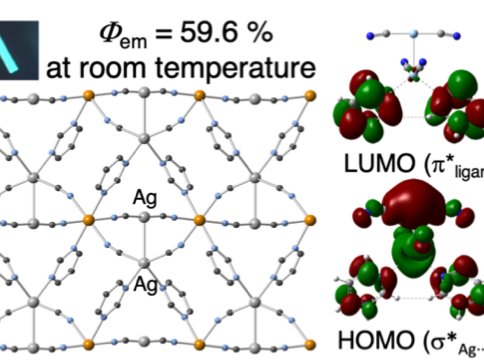Research Projects in Miyasaka Lab. |
Research Project 1: Manipulate spins in the nano-size world: SMMs, SCMs, and related materials
|
Research Project 2: Synergistically manipulate magnetic ordering and electronic transporting on MOFs
|
Research Project 3: Manipulate charge on DA chains –Neutral–ionic transition in covalently bonded chains–
|
Research Project 4: Manupulate charge and host-guest chemistry in redox-active porous coordination polymers
|
Research Project 5: Manipulate structural dynamics by host-guest chemistry
|
Research Project 6: Change magnetic phases by ubiquitous gases
|
Research Project 7: Control of mobility of electron and ion in redox-active frameworks: toward new materials for battery
|
Research Project 8: Physical chemistry created by asymmetry【Representative articles】
|
Research Project 9: Charge control in honeycomb CT layers
【Representative articles】
|
Research Project 10: Detecting emission of MOFs varied by guests【Representative articles】
|



